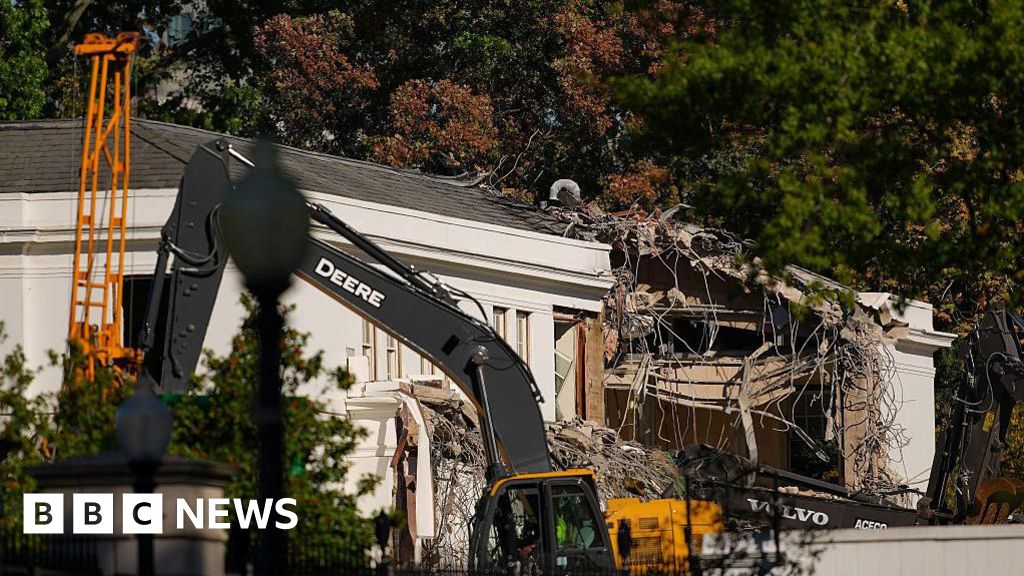Construction has officially begun on a lavish new ballroom at the White House, a $250 million (£187 million) project initiated under President Donald Trump’s administration. The undertaking involves transforming a significant portion of the East Wing into a grand 90,000 square foot (8,360 square meter) event space. Despite the excitement surrounding the expansion, considerable controversy and mystery continue to surround the sources of funding and the identities of the wealthy donors and corporations bankrolling the project.
President Trump has publicly stated that he intends to personally cover a substantial part of the construction costs. At the same time, he has hinted that some anonymous benefactors may be prepared to contribute more than $20 million each to help complete the ballroom. This funding approach has raised eyebrows among legal and ethics experts, who worry that it could amount to a form of “pay-to-play,” where donors gain privileged access to the administration by virtue of their financial support.
Richard Painter, a former chief ethics lawyer in the George W. Bush White House from 2005 to 2007, voiced strong concerns about the project’s ethical implications. Speaking to the BBC, Painter described the ballroom initiative as an “ethics nightmare,” emphasizing that soliciting donations in exchange for access to the White House sets a troubling precedent. “These corporations all want something from the government,” he said, highlighting the potential conflicts of interest that could arise when major companies are involved in funding a government building.
The fundraising effort has already included an exclusive dinner event on October 15th, hosted at the White House itself. This gathering attracted senior executives from some of America’s most prominent and powerful corporations. Attendees included representatives from Blackstone, OpenAI, Microsoft, Coinbase, Palantir, Lockheed Martin, Amazon, Google, as well as prominent sports team owners like Woody Johnson, owner of the New York Jets, and Shari and Edward Glazer, who co-own both the Tampa Bay Buccaneers and Manchester United football clubs. The presence of these influential figures has only added to speculation about the potential influence they may seek in return for their financial contributions.
Documentation reviewed by CBS News and the BBC reveals that donors may receive some form of “recognition” for their generosity. Although the details remain unsettled, acknowledgments could include having their names etched into the ballroom’s structure itself. This kind of public commemoration of donors has its own set of ethical questions, as it blurs the line between philanthropy and lobbying.
Originally, White House officials announced that the ballroom would have seating capacity for 650 guests. However, President Trump recently stated that the facility would actually accommodate up to 999 people, nearly doubling the original estimate. This increase in size further fuels concerns about the space being used not only for official government functions but also potentially for large-scale fundraising events.
So far, only one donor has been publicly identified. Court documents reveal that YouTube has pledged $22 million toward the project. This contribution is part of a settlement agreement with Trump related to the suspension of his YouTube account following the January 6, 2021 Capitol riot. Beyond this, the identities and donation amounts of other contributors remain undisclosed, and an official donor list has yet to be released. White House officials have indicated plans to eventually reveal the list of contributors.
Financial management of the donations is reportedly being handled by the Trust for the National Mall, a nonprofit organization that partners with the National Park Service to fundraise for projects on the National Mall and at the White House. This arrangement is intended to maintain a degree of separation between the White House and the fundraising activities.
During the donor dinner, President Trump expressed optimism about the generosity of attendees, stating that many had been “really, really generous.” He recounted how some guests had inquired whether a $25 million donation would be appropriate, to which he responded, “I said: I will take it.” This exchange underscores the high stakes involved and the significant sums of money at play in the project’s funding.
The White House administration has defended the fundraising efforts, insisting that soliciting private donations is entirely appropriate. Officials stress that the new ballroom will serve future administrations as well and that the renovation will not cost taxpayers a single dollar. They argue that the current White House facilities are inadequate for hosting large state dinners and other official events, often requiring the use of temporary tents on the South Lawn to accommodate guests. The ballroom, they claim, is a necessary modernization to better serve the needs of the presidency.
Despite

